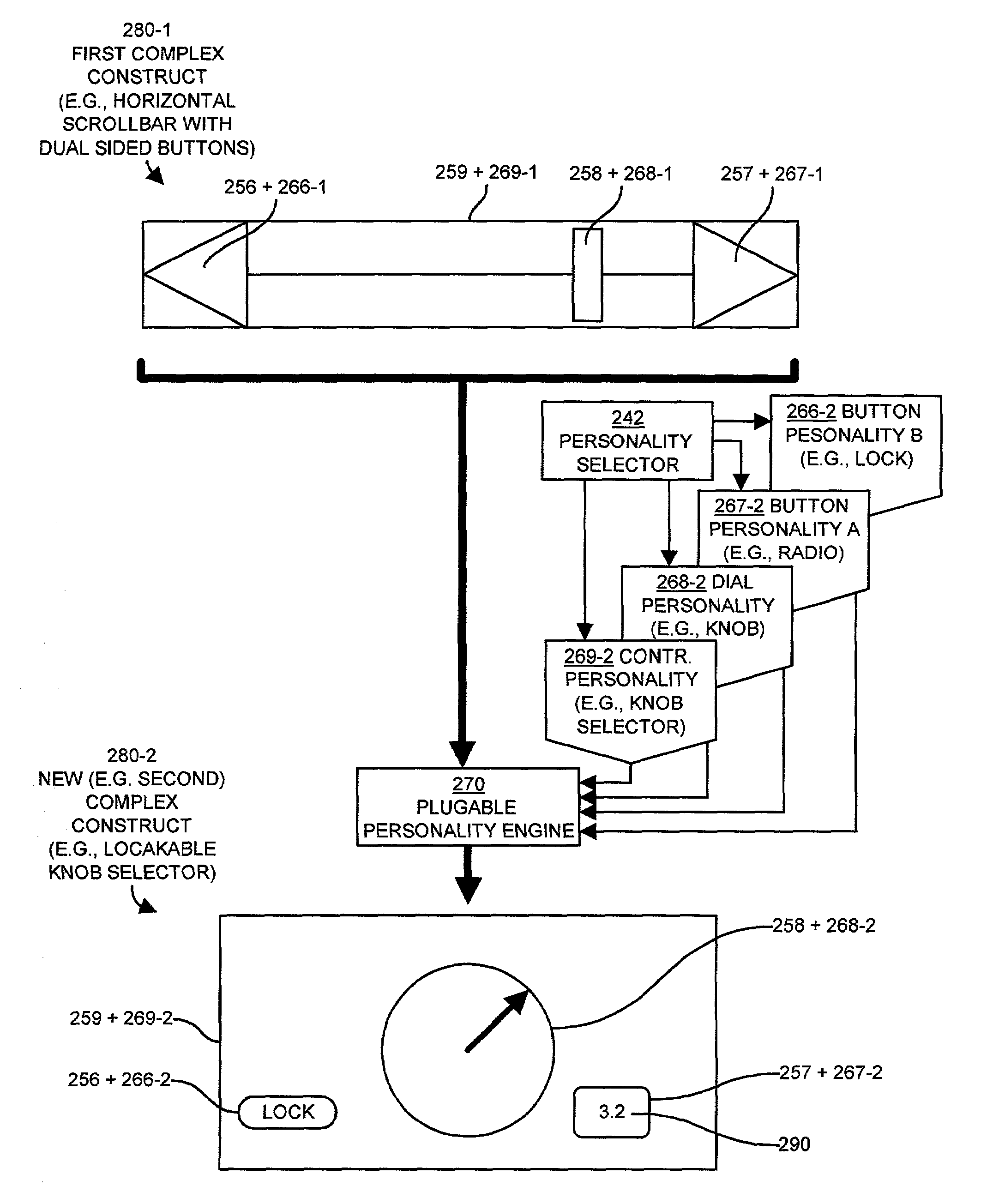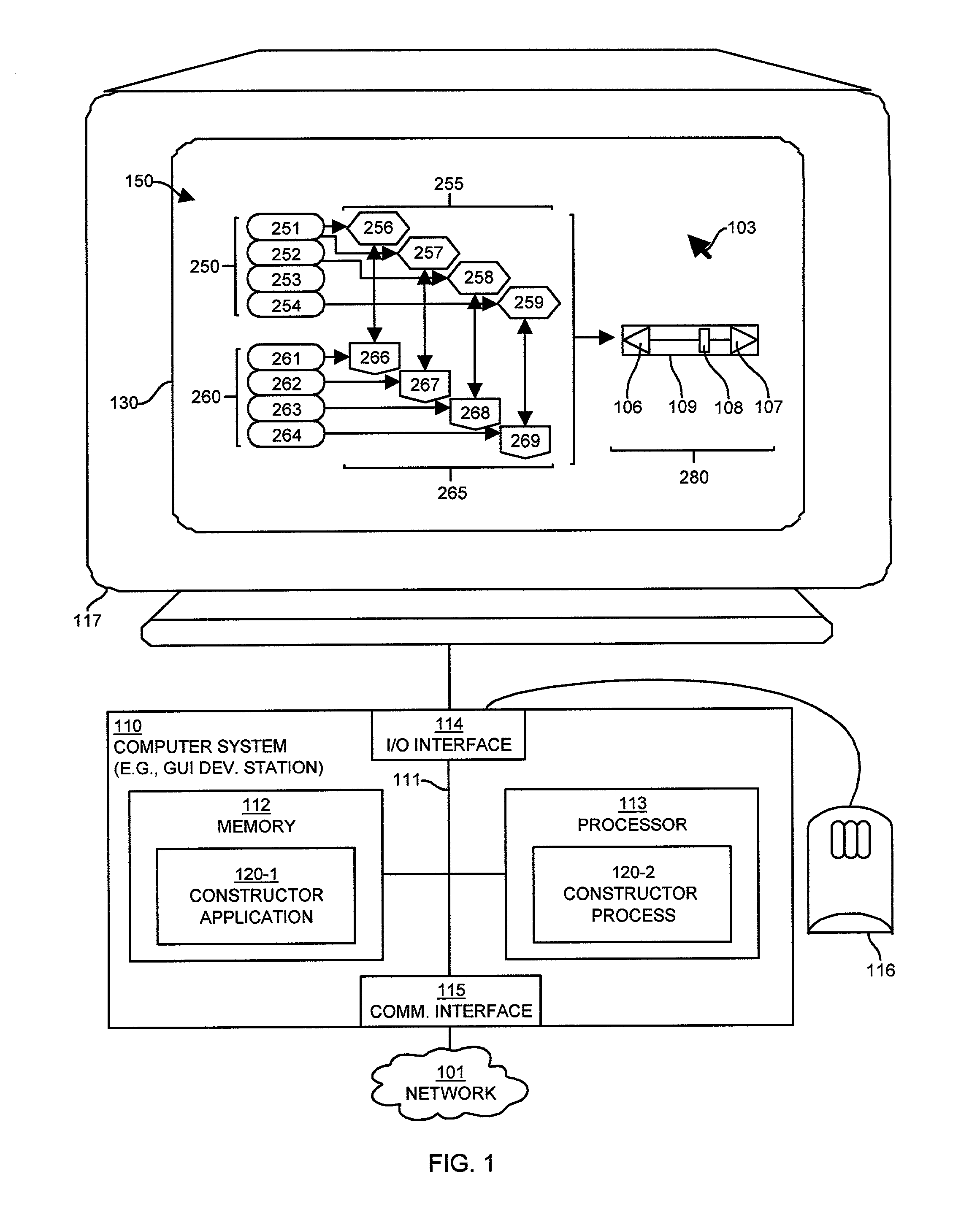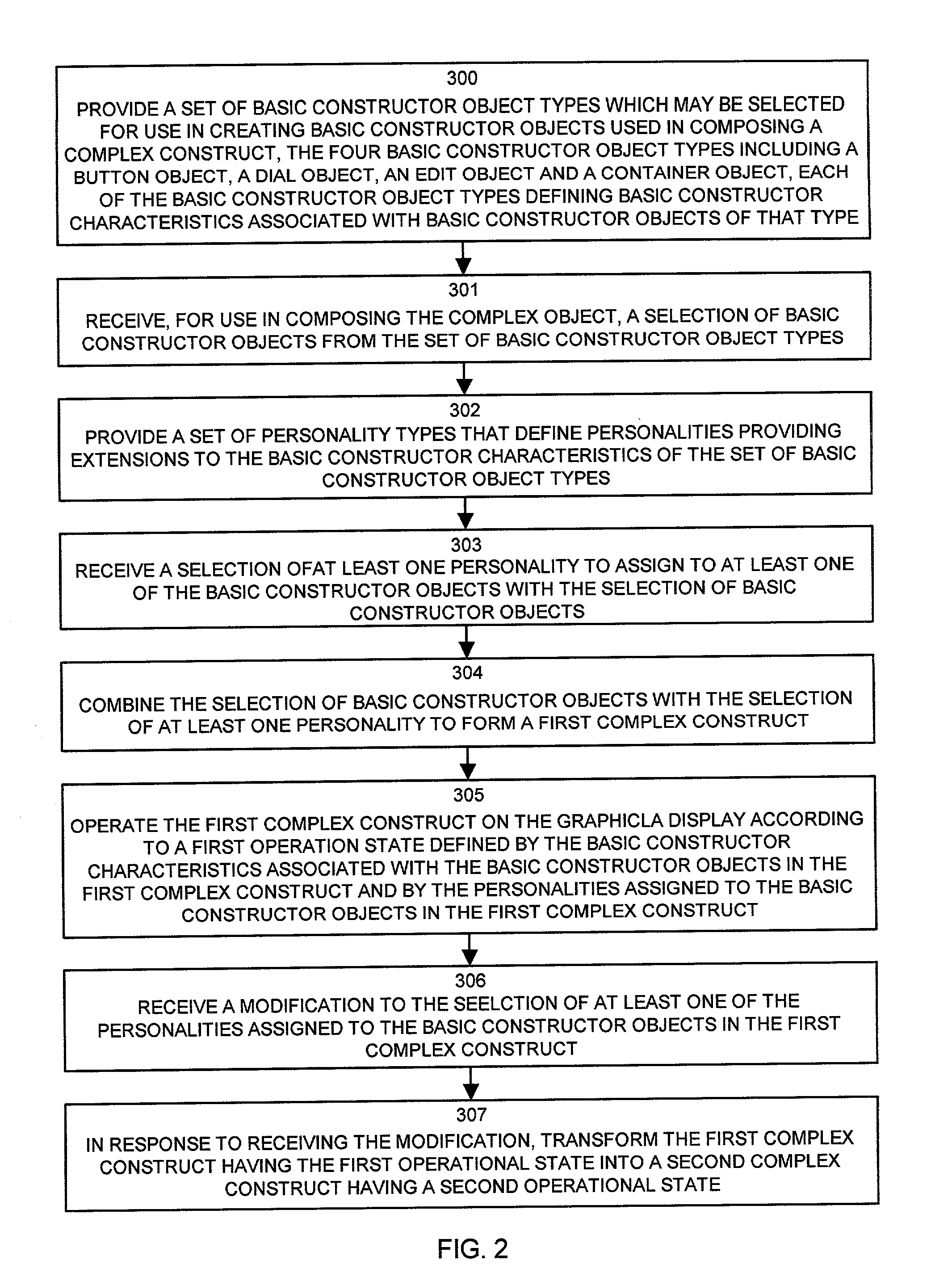Methods and apparatus for creating and transforming graphical constructs
a technology graphical construct, which is applied in the field of system for the creation of graphical user interface, can solve the problems of complex programming skills, cumbersome and efficient use of conventional widget libraries on all types of computing platforms, and difficulty in achieving the effect of simple use and efficient us
- Summary
- Abstract
- Description
- Claims
- Application Information
AI Technical Summary
Benefits of technology
Problems solved by technology
Method used
Image
Examples
Embodiment Construction
[0039]Embodiments of the invention provide mechanisms and techniques for composing complex constructs, such as windowing constructs used in a graphical user interface environment, from a combination of instantiations of four base classes of objects, called basic constructor objects, and from personalities assigned to those basic constructor objects. Each different type of basic constructor object defines a respective basic fundamental operation that can occurs within a complex construct. The four basic constructor object types operate as building blocks for complex constructs and include a button object type, a file object type, an edit object type and a container object type. By combining instantiations of these basic constructor object types and by selecting and assigning personalities to the basic constructor objects, complex constructs can be formed of an almost limitless variety. As an example that will be explained in more detail, a scroll bar construct may be created with a c...
PUM
 Login to View More
Login to View More Abstract
Description
Claims
Application Information
 Login to View More
Login to View More - R&D
- Intellectual Property
- Life Sciences
- Materials
- Tech Scout
- Unparalleled Data Quality
- Higher Quality Content
- 60% Fewer Hallucinations
Browse by: Latest US Patents, China's latest patents, Technical Efficacy Thesaurus, Application Domain, Technology Topic, Popular Technical Reports.
© 2025 PatSnap. All rights reserved.Legal|Privacy policy|Modern Slavery Act Transparency Statement|Sitemap|About US| Contact US: help@patsnap.com



